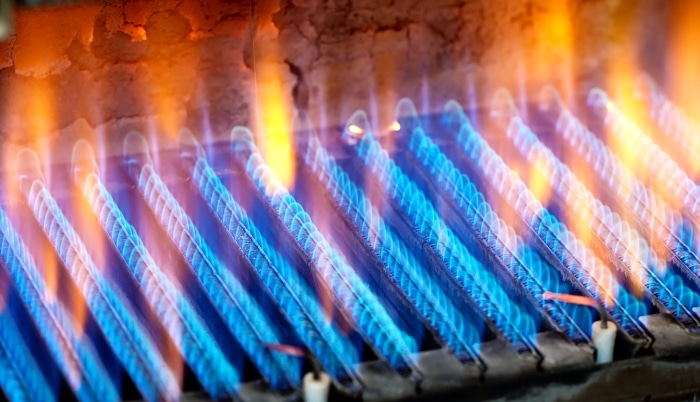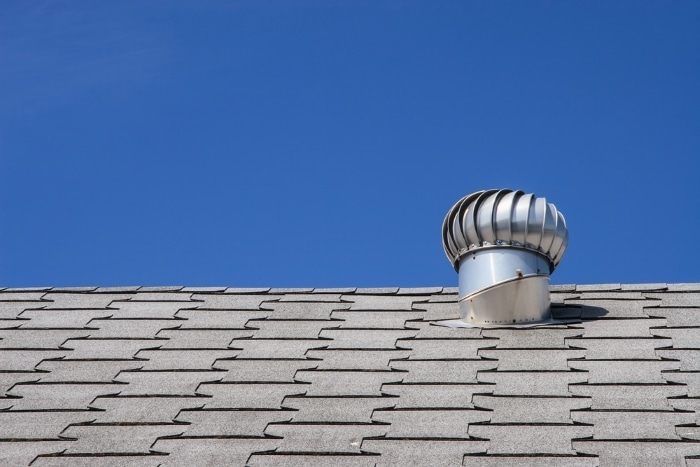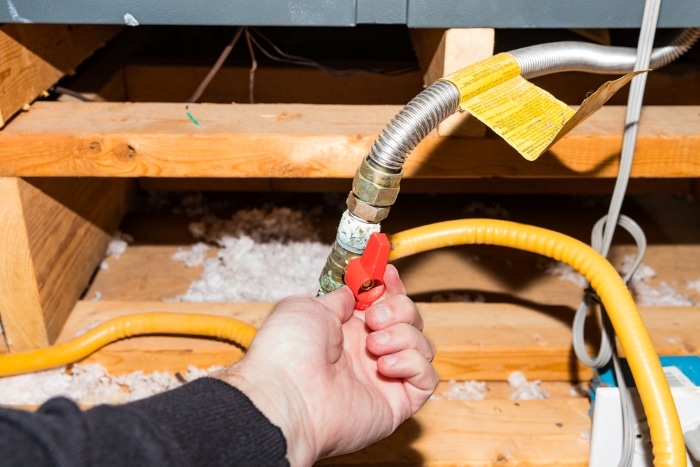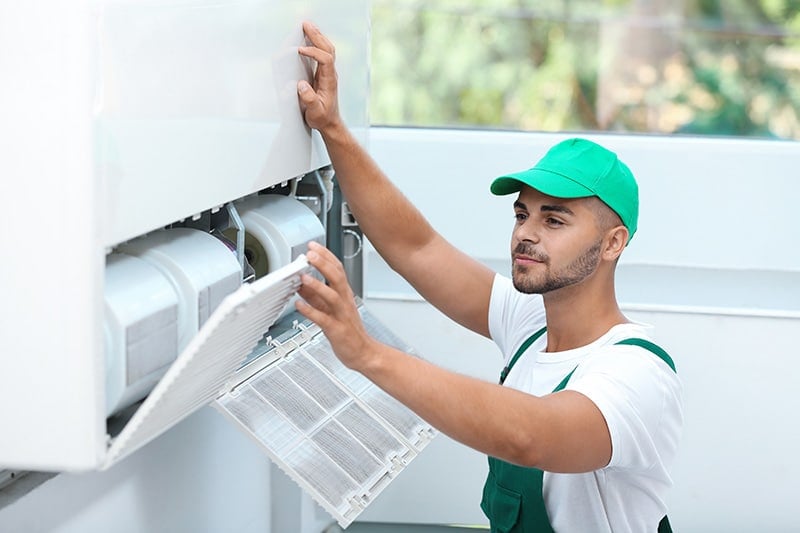Is your furnace flickering, and you’re trying to figure out why?
That sucks! Furnaces are great at providing heat and making our homes more comfortable, but when they start flickering, thousands of doubts can arise.
I know how annoying it can be to have your furnace flicker like there’s no tomorrow – especially during a freezing day when all you want to do is hide from the cold under the covers and read a good book or watch your favorite series. Luckily, you’ve come to the right place for answers. Below, you’ll find a list including 8 common causes for a flickering furnace flame, as well as simple ways to address the problem.
When your furnace has a flickering flame, it can be due to dirty burners, a blocked or restricted air supply, improperly adjusted gas pressure, or strong drafts. A cracked heat exchanger, a blocked chimney, a faulty thermocouple, and a contaminated gas supply can also be to blame.
Keep reading to get your furnace back to normal!
Why Your Furnace Flame Is Flickering
Furnaces are great at helping us stay warm during freezing days, but sometimes, they can fail and leave us out in the cold. While there are many possible reasons why you’re dealing with a flickering furnace flame, some culprits are more commonly to blame than others.
Here are some things which, in my experience, should be considered first to save time, effort, and money.
#1 Dirty/Worn Out Burners
When you’re dealing with a flickering furnace flame, the first thing you want to check is your burners. When you don’t clean your furnace for a long time, the burners can become excessively dirty with dust, other types of debris, and even gas residue (yes, gas can leave residue on your burners after a while).
If your furnace’s burners are dirty or worn out, the flame will likely flicker as gas can’t flow properly through the right channels. Unless the burners are badly damaged, I’ve found that a simple, thorough cleaning session can get things back to normal.

Solution: To clean your furnace’s burners, first, you must cut the power and gas supply to the appliance from the gas valve and your circuit breakers. Once you can work comfortably on the burners, use a wire brush and a cleaning solution (it can be water and soap or a mixture of equal parts water and vinegar to disinfect the area).
After ensuring the burners are completely clean, restore power and gas to the furnace and see if the flame still flickers. If not, problem solved; however, if there’s still flickering present, try to spot any signs of damage to the burners.
In case you do notice the burners are damaged, my usual advice is to replace them. You can use your User Manual to determine the model part number you need. Alternatively, you can call a technician to have them take a look and do the repairs for you.
#2 Restricted Air Supply
The next possible reason why you’re dealing with a flickering furnace flame is that there’s not enough air to feed the flame. As you may know, for fire to exist, there must be a combustible (gas) and a comburent to react with the combustible (oxygen, in this case).
To prevent flickering, your furnace’s burners are designed to let enough air in to create a controlled, steady flame; however, when there are blockages along the air’s pathway, there won’t be enough oxygen to feed the flame normally.
There are many possible things that can cause an air blockage in your furnace – from something as simple as clutter around the appliance to a more complex issue, such as dirty/broken burners.
Solution: I find that the simplest and quickest way to try to address poor airflow into your furnace is to clear clutter around it and then test to see if the flame still flickers. If not, you’ve successfully solved the issue, but if there’s still flickering and you’ve also already cleaned and inspected the burners, you’ll have to keep trying other solutions.
#3 Improperly Adjusted Gas Pressure
Your appliance is designed to work with a determined amount of gas pressure when it’s on to provide heat and keep the flame steady. Whenever an issue prevents enough gas pressure from flowing into the furnace, a flickering flame is to be expected.
There are many possible reasons why your furnace doesn’t have enough gas pressure – from an obstructed gas line to an issue with your gas supply valve or even with your home’s entire gas supply layout.
Solution: Depending on your furnace brand and model, the gas line may be more or less accessible. If you can comfortably remove the gas line going from the gas supply valve into your furnace, do so and test the line by following the steps below:
- Turn off the gas supply valve and cut power to the furnace if it runs on electricity.
- Locate the gas line and disconnect it.
- Inspect the gas line from the inside and try to spot any blockages or gunk buildup.
- If you determine the gas line is okay, the issue likely lies with either a bad gas supply valve or an issue with your home’s gas supply.
In such cases, my usual advice is to contact a certified technician to take a closer look at the situation and determine the source of the problem in order to address it.
#4 Strong Drafts
While your furnace needs proper airflow to fuel the flame inside it and keep it from flickering, there’s a limit to everything.
Believe it or not, too much air can be counterproductive and cause the flame to flicker. Typically, furnaces, like water heaters, protect the flame inside them from strong drafts with their metal casings and coverings; however, if there are cracks or fractures on the appliance’s body, said drafts can go into the unit and cause problems with the flame.
Not using the right coverings for your furnace or leaving it uncovered altogether can cause a similar problem, so if you’ve ever tried to access your furnace’s burners, please ensure that you’ve put everything back together as it’s supposed to.
Solution: Look for damage to the furnace and the vents around it. Sometimes, corrosion, rust, and even accidental banging against your furnace’s parts can be enough to tear small holes and let air in.
Depending on the size of the damage, covering cracks and holes with electrical tape may be an option; however, if the damage is too severe, you’ll need to replace the panel or any other parts that have been affected.
Alternatively, if your furnace isn’t installed and can be repositioned, I’d recommend trying to place it somewhere air drafts can’t reach it as easily.
#5 A Cracked Heat Exchanger
Another possible reason why you’re dealing with a flickering furnace flame is that the heat exchanger inside the appliance is cracked.
The heat exchanger inside your furnace is, in a nutshell, a set of tubes that allow air to go into the appliance to be heated and then released into your home. Depending on your furnace’s brand and model, your appliance might only have 1 exchanger, which makes it more prone to cracking, as the tubes sit right above the burners and are subjected to extreme heat constantly.
Furnaces with 2 heat exchangers are much more efficient than their counterparts, and cracking is a much less common issue.
Solution: A cracked heat exchanger will let some (or a lot) of the air the furnace intakes to escape into all parts of the appliance, including the burners. The rogue air drafts can quickly reach the flame and cause it to flicker continuously.
In such cases, I’ve found that the simplest and quickest way to deal with the problem is to get a quotation on a new heat exchanger and ponder whether the cost of repairs is worth it. Depending on how old your furnace is and how much you paid for it initially, the repair may not be the best course of action.
On average, you can expect to pay about $1,500 for a new heat exchanger; however, the price can vary greatly depending on the furnace’s size and capacity and the efficiency and quality you’re looking for.
#6 A Blocked Chimney
A blocked chimney can also explain why you’re currently dealing with a flickering furnace flame. Your furnace’s chimney is one of the most important parts of the appliance, as it exhausts gas residue and fumes into the air outside.
Ensuring that your furnace’s chimney works perfectly is key to preventing a flickering flame and, most importantly, keeping you and your family safe. If the chimney is blocked, the gas that doesn’t get burned by your furnace’s burners can go back down into the flame and into your home, putting you at risk of intoxication from carbon dioxide.

In my experience, the chimney can become blocked for many reasons, including snow, dry leaves, and improper gas combustion that creates soot, which can build up enough to cause problems over time.
Solution: Your best bet when dealing with a blocked furnace chimney is to cut off the gas and power supply to the appliance, wait until it’s completely cool, and then try to gain access to the chimney.
Do what you can to clear the chimney from any debris and remove soot excess if you spot it. Provided you’re not sure how to go about addressing the problem, please do not hesitate to call a technician for help.
It’s better to be safe than sorry!
Note: An easy way to tell whether your furnace’s chimney is blocked is by turning off the gas supply into the appliance and then burning a piece of paper or a stick of incense inside the unit. If you notice the smoke from the paper or the incense does not exit through the natural pathway of the chimney but rather stays inside the furnace, it’s almost a certainty that there’s a blockage.
#7 A Faulty Thermocouple
A faulty thermocouple can also explain why your furnace’s flame is flickering. Your furnace’s thermocouple is a safety device designed to prevent gas leaks in case the flame goes out. The component is basically a metal rod that’s always in contact with the burner’s flame to detect when the flame is on and when it’s off.
And while the component is great as a safety measure, if it’s faulty, it can measure the temperature incorrectly and think the flame is going out, causing the flickering you’re currently experiencing.
Solution: The easiest way to deal with a suspicious thermocouple is by replacing the component. Typically, thermocouples are cheap, as they can go for as little as $15; however, the price can greatly vary depending on your furnace’s brand and model. To find the right thermocouple replacement for your appliance, check your User Manual for the part model number.
If you don’t have the manual handy anymore, no worries; please refer to our free resource below.
#8 A Contaminated Gas Supply
The last possible reason why you’re dealing with a flickering furnace flame is that the gas supply coming into your home is contaminated in some way. Furnaces, like all other gas-related appliances, need high-quality gas to work normally and deliver the results people expect from them.
When the gas the furnace is getting is not high-quality, there can be many issues, including a flame that won’t light, improper combustion, excess soot buildup in and around the appliance, and, of course, a flickering flame.

Contaminated gas can come from many sources, including poor treatment at your supplier’s facilities, a bad batch in production, improper storage, and more.
Solution: There’s no easy way to tell whether your gas supply is contaminated. In my opinion, the only way to know for sure is by calling someone who has a gas chromatograph and knows how to use it.
I’d recommend you call a certified HVAC technician with the proper tools and skillset to examine your gas supply and its quality closely. Once they’ve determined the gas is contaminated, you can ask your local gas supplier about the situation.
Addressing a Flickering Furnace Flame
That about covers it!
When you’re dealing with a flickering furnace flame, you can be left without your main heat source during freezing days. Not to mention that you’re at risk of gas leaks and other issues related to improper combustion.
Luckily, as I hope this piece has helped you better understand, addressing the most common causes behind a flickering furnace flame is typically easy, quick, and free. More often than not, something as simple as ensuring your furnace’s burners are clean and undamaged and that no strong drafts are going into the unit will do the trick.
Thanks for reading. If this article was useful and answered your most burning questions, please check out our other resources and free guides below and consider subscribing to our newsletter.
Have a wonderful week!
-Craig.









